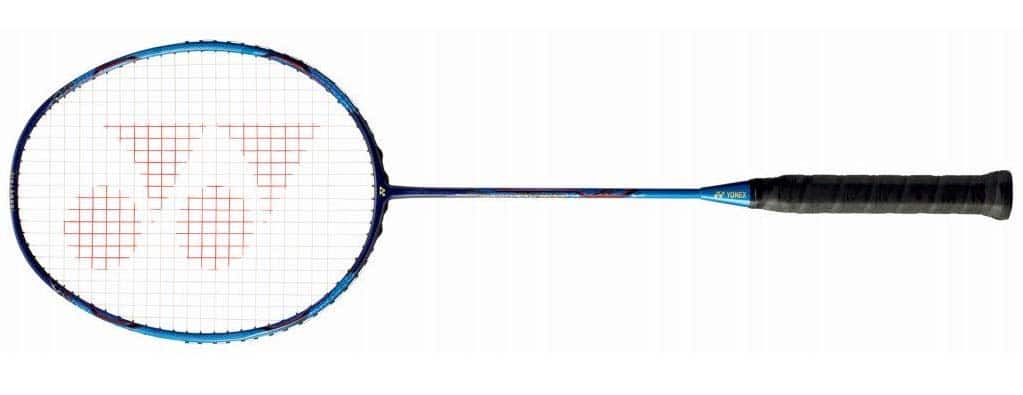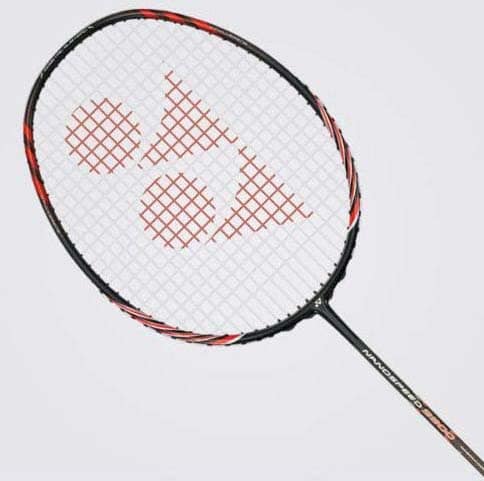Are you looking for the best badminton racket under 100 dollars? We have listed the best badminton racket under $100 below.
Best Badminton Racket Under 100 Dollars
Image | Name | Key Feature | Ratings | Price |
|---|---|---|---|---|
| ||||
| ||||
| ||||
| ||||
| ||||
|
Best Badminton Racket Under 100 - Buying Guide
At first glance, most badminton rackets look pretty similar. But if you take a closer look, you can see small but subtle differences that ultimately make each racket unique.
Beginners do not have to deal with such details as much. It is more important to learn the technique, hit the ball consistently clean, and have fun. And it doesn't have to be a graphite racket that costs more than dollars and is fine-tuned for attacking players.
For most beginners, one of the best badminton racket under 100 dollars will be outstanding in the first few weeks, but our experience has shown that even in the low price segment of around 100 dollars, you can find solid, light branded clubs made of carbon that are much more fun. Often these models are designed as all-rounders and are therefore a safe choice for the first few months.
Once you have gained more experience and tried out one or the other racket, you quickly get a feel for which racket properties best suit your playing style. Then you can look around specifically. The coordination of the rackets only becomes essential for advanced or professional players. Here the ideal racket can ultimately mean the difference between winning and losing.
Material
A glance into the materials used to create a racket might help you judge if it's any good. Cheap versions are generally built of steel, making them heavy and clumsy. Steel's only benefit is its toughness, which comes in handy when playing with kids. Anyone who intends to play often or seriously should use a carbon racket.
The majority of carbon rackets you see have an array of materials. Since we don't want to hold a chemistry lesson, we can only say this much: High modulus graphite, for example, is a light and rigid carbon that is frequently used. Graphite allows us strong clubs that are nevertheless light and simple to wield.
Weight
Material and weight are often closely connected. Steel clubs weigh between 100 and 120 grams, whereas carbon clubs weigh between 70 and 95 grams. Lighter isn't always better, but most players like clubs weighing between 75 and 90 grams. Heavier racquets are suffering in terms of maneuverability, but lighter racquets cannot deliver adequate power.
The test revealed that even inexperienced players are sensitive to racket weight. 4 to 5 grams directly affects the game's feel. As a result, weight is one of the few characteristics universally applicable to all skill levels. Light rackets are more pleasant for recreational sports or casual badminton games since they require less maneuver and acceleration.
Balance
The distribution of racket weight also varies. To discover a racket's balance, place it on a thin edge and identify the point where it stays steady and does not fall to either side. Then you measure the handle length from the balancing point.
The higher the value of a racket, the more top-heavy it is. More head weight logically results in increased centrifugal mass and, thus, more forceful strokes. Grip weight has a lesser value in return. These clubs often have their strengths in terms of handling.
In general, a racket that is more top-heavy and hence more powerful has a more extended grip.
Head-light clubs are under 29 centimeters in balance, whereas balanced clubs are between 29 and 30 centimeters. Increasing top-heaviness requires all of the items listed above. Because we only had rackets already strung in the test, we always determined significantly higher results in our balancing test.
Handle
The handle is a vital component, as it connects the player to the racket. There are two critical factors to consider: grip and thickness. Most badminton rackets only come with a base grip.
This is generally sufficient for casual usage, but adding an overgrip for more frequent use is recommended. It improves grip, dampens vibrations and the overall feel of the racket. Sometimes it's included with the delivery, but it's also available online for a reasonable price.
The issue of thickness persists: clubs with simply a baseband are frequently fragile. As a general rule, the fingers should not contact the ball of the hand in a conventional handle. The handle can be made thicker or thinner depending on how tightly you wrap it.
Flexibility
The shaft's flexibility is one component that might be difficult to discern at first look. Modern materials like graphite allow for shafts of varied stiffness that influence the game. A flexible shaft helps beginners create more incredible speed. The "whip effect" makes the racket swing better with the stroke, giving the ball greater momentum.
The stiffer the shaft, the less noticeable the whip effect, and the more power are required to accelerate the ball.
Less club movement means improved ball control and accuracy. Beginners and lesser players benefit from a flexible shaft, while pros and strong players benefit from a firm shaft.
Racket head and strings
The clubhead comes in two basic shapes: oval and isometric. Isometric clubs are ideal for beginners or less experienced players since the sweet spot - the optimal meeting point - is larger. In comparison to oval clubs, there are far fewer foul hits. On the other hand, Oval clubhead fans anticipate greater power - if you hit the ball cleanly.
Naturally, the string is also a part of the head. Professionals can string their rackets anyway they wish, while amateurs do not. That's why we only used factory strings on all rackets.
String tension is generally measured at around 10-13 kilograms (about 22-27 pounds) and is most commonly preferred by manufacturers. However, the factory strings' hardness is not usually specified, yet most rackets should be strung with 9-10 kilos. Professionals typically choose an even tougher string.
Best Badminton Racket Under $100 - FAQ
Q1 - What to consider when buying the best badminton racket under 100 dollars?
Generally, on the basis of three factors: weight, material composition, and price. We recommend a carbon racket weighing no more than 95 grams for beginners. While some of them are equivalent to steel clubs in price, they are considerably more enjoyable to play. The finest badminton racket under $100 will suffice. Because your abilities take precedence over the club's fine-tuning at first.
Q2 - How do I find the best badminton rackets under 100 bucks?
Badminton rackets differ in many small components, including weight, balance, and flexibility. To find a racket that suits your style, experience and trial and error are essential.
Q3 - How heavy should a badminton racket be?
You can't go wrong with a racket between 75 and 95 grams to begin with. Specimens over 100 grams feel increasingly cumbersome, while rackets that are too light lack momentum for hard hits. In the range between 75 and 95 grams, it depends on your own preferences and playing style.
Q4 - What material is a quality club made of?
Good badminton rackets are usually made of carbon. For example, high modulus graphite is often used, a light and at the same time stiff material. Steel clubs, on the other hand, are hardly recommended because they are too heavy.
Q5 - Does a badminton racket under 100 worth buying?
The price range for badminton rackets starts at around 10 dollars, but a very high-quality racket can also cost around 200 dollars. Our test has shown: You can get solid all-round models from well-known brands for as little as 25 dollars, which can be completely sufficient for casual or hobby players. The clubs that convinced us the most in the test are priced between 60 and 110 dollars.


